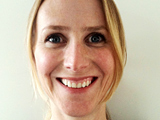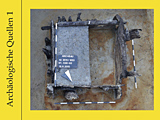Further information on WWW
Official Hashtag: #ArchQ
Contact:
Diese E-Mail-Adresse ist vor Spambots geschützt! Zur Anzeige muss JavaScript eingeschaltet sein.
Archäologische Quellen
Archäologische Quellen (Arch. Quellen - engl. Archaeological Sources) is a monographic series established in 2017 by the DGUF to present "sources", i. e. excavation documentation, archaeological finds and similar, without their publication having to be accompanied by detailed scientific analyses. The sources merely give brief interpretations of the find, they provide the raw material for more in-depth scientific analyses which can then be made in further publications. Archäologische Quellen is published in a print edition and ‒ in cooperation with Heidelberg university library (Propylaeum portal) ‒ online in Golden Open Access. Supplementary materials such as large-format excavation maps and Open Data are included in the online edition, if required.
Countless archaeological finds make their way into the archives without any further processing, in the hope that at some time somebody, e. g. a postgraduate student, will make the effort required for scientific evaluation and publication. Since there are many more excavations than postgraduate students, too many archaeological finds remain in the archive without any realistic chance of being evaluated and published within a short period of time. A mountain of work which is getting higher and higher with no prospect as yet of being tackled in the foreseeable future.
A completely unsatisfactory situation
If we consider how much material does not find its way into archaeological research for years and is thus unable to drive it forward, we realise how unfortunate the situation described actually is. Simply storing the fruits of excavations in an archive is actually just as correct as it is completely unsatisfactory for widely differing interested parties. How are we to also make the politicians, the investors and the public understand that a professional archaeology is absolutely imperative and must be financed, when at the same time the archives are overflowing? How are we to communicate the fact that archaeological finds must be in archives and in the possession of the federal state, when decades go by without them even being evaluated? It is against this background that this series of monographs has been established.
Countless archaeological finds make their way into the archives without any further processing, in the hope that at some time somebody, e. g. a postgraduate student, will make the effort required for scientific evaluation and publication. Since there are many more excavations than postgraduate students, too many archaeological finds remain in the archive without any realistic chance of being evaluated and published within a short period of time. A mountain of work which is getting higher and higher with no prospect as yet of being tackled in the foreseeable future.
A completely unsatisfactory situation
If we consider how much material does not find its way into archaeological research for years and is thus unable to drive it forward, we realise how unfortunate the situation described actually is. Simply storing the fruits of excavations in an archive is actually just as correct as it is completely unsatisfactory for widely differing interested parties. How are we to also make the politicians, the investors and the public understand that a professional archaeology is absolutely imperative and must be financed, when at the same time the archives are overflowing? How are we to communicate the fact that archaeological finds must be in archives and in the possession of the federal state, when decades go by without them even being evaluated? It is against this background that this series of monographs has been established.
Archäologische Quellen 2: Mirko Geisendorf, Der eisenzeitliche Siedlungsplatz von Schwerte-Wandhofen
Der Band enthält den Grabungsbericht einer Untersuchung der Firma ArchBau, die 2017 in Schwerte-Wandhofen (Kr. Unna, Nordrhein-Westfalen) stattfand. Erfasst wurde eine in ihren Details ungewöhnliche eisenzeitliche Siedlung (ca. 8.–1. Jh. v. Chr.). Der Band stellt die Ausgrabung, alle wesentlichen Befunde sowie ausgewählte Funde vor. Erhältlich ist die Publikation als Download im Open Access sowie als gedruckte Ausgabe. mehr
Der Band enthält den Grabungsbericht einer Untersuchung der Firma ArchBau, die 2017 in Schwerte-Wandhofen (Kr. Unna, Nordrhein-Westfalen) stattfand. Erfasst wurde eine in ihren Details ungewöhnliche eisenzeitliche Siedlung (ca. 8.–1. Jh. v. Chr.). Der Band stellt die Ausgrabung, alle wesentlichen Befunde sowie ausgewählte Funde vor. Erhältlich ist die Publikation als Download im Open Access sowie als gedruckte Ausgabe. mehr

Speed up research and promote a culture of openness
"Archäologische Quellen" allows us to publish excavation reports in their 'as-is' state without a time-consuming scientific evaluation. In Golden Open Access and with the standard CC BY licence, specialists as well as interested members of the public are afforded easy access to them, they stimulate further research, archaeology provides a comprehensive and verifiable public account of its day-to-day activities, and those undertaking the excavation work visibly obtain the well-deserved authorship of the works they produce.
A non-commercial project with an international approach
We offer all our colleagues the opportunity to publish their excavation reports in "Archäologische Quellen". This is tied neither to a DGUF membership nor a particular nationality. We are also open to manuscripts not written in German, the only requirement is an abstract in German or English; the communication language with the editors is German or English.
"Archäologische Quellen" is a non-commercial project produced by the DGUF on a voluntary basis. The DGUF publisher receives a fixed, flat-rate fee per volume to cover the prime costs and in particular the costs for the deposit copies required for the libraries and for review copies; special costs incurred by the DGUF are negotiated individually, where necessary. No further fees are levied on the author.
"Archäologische Quellen" allows us to publish excavation reports in their 'as-is' state without a time-consuming scientific evaluation. In Golden Open Access and with the standard CC BY licence, specialists as well as interested members of the public are afforded easy access to them, they stimulate further research, archaeology provides a comprehensive and verifiable public account of its day-to-day activities, and those undertaking the excavation work visibly obtain the well-deserved authorship of the works they produce.
A non-commercial project with an international approach
We offer all our colleagues the opportunity to publish their excavation reports in "Archäologische Quellen". This is tied neither to a DGUF membership nor a particular nationality. We are also open to manuscripts not written in German, the only requirement is an abstract in German or English; the communication language with the editors is German or English.
"Archäologische Quellen" is a non-commercial project produced by the DGUF on a voluntary basis. The DGUF publisher receives a fixed, flat-rate fee per volume to cover the prime costs and in particular the costs for the deposit copies required for the libraries and for review copies; special costs incurred by the DGUF are negotiated individually, where necessary. No further fees are levied on the author.
Published by: Frank Siegmund (Editor-in-Chief) & Diane Scherzler for the Deutsche Gesellschaft für Ur- und Frühgeschichte (German Society for Pre- and Protohistory; DGUF)
ISSN
Print-ISSN: 2566-557X
Online-ISSN: 2566-5588
The series is published under CC BY licence.
ISSN
Print-ISSN: 2566-557X
Online-ISSN: 2566-5588
The series is published under CC BY licence.
If you are interested in publishing with us:
For further information on editorial guidelines and typesetting specifications, for financial aspects and division of work etc. please contact Frank Siegmund, our editor-in-chief:Diese E-Mail-Adresse ist vor Spambots geschützt! Zur Anzeige muss JavaScript eingeschaltet sein.
For further information on editorial guidelines and typesetting specifications, for financial aspects and division of work etc. please contact Frank Siegmund, our editor-in-chief:
Address for orders/ publisher:
DGUF-Verlag
An der Lay 4
54578 Kerpen-Loogh
Germany
Tel. +49 (0) 6593 - 989 642
Fax +49 (0) 6593 - 989 643
Diese E-Mail-Adresse ist vor Spambots geschützt! Zur Anzeige muss JavaScript eingeschaltet sein.
DGUF-Verlag
An der Lay 4
54578 Kerpen-Loogh
Germany
Tel. +49 (0) 6593 - 989 642
Fax +49 (0) 6593 - 989 643
Warum braucht es diese Reihe? Vorwort der Herausgeber zu Arch. Quellen Band 1. PDF
Redaktionsrichtlinien und Satzanweisungen Archäologische Quellen PDF
Finanzielle Fragen und die Arbeitsteilung zwischen DGUF und Autoren PDF
Redaktionsrichtlinien und Satzanweisungen Archäologische Quellen PDF
Finanzielle Fragen und die Arbeitsteilung zwischen DGUF und Autoren PDF
Archäologische Quellen 1: Melanie Eigen, Die eisenzeitliche u. römische Siedlung von Tönisvorst-Vorst
This volume contains the excavation report and first results of an investigation that took place in Tönisvorst-Vorst (District Viersen, North-Rhine-Westphalia, Germany) in 2015. Near the known Roman cemetery "An Hinkes Weißhof" an area of about 5 ha was examined archaeologically; mainly traces of an Iron Age and Roman settlement were excavated. The volume is available as download (Open Access) and as printed book. more
This volume contains the excavation report and first results of an investigation that took place in Tönisvorst-Vorst (District Viersen, North-Rhine-Westphalia, Germany) in 2015. Near the known Roman cemetery "An Hinkes Weißhof" an area of about 5 ha was examined archaeologically; mainly traces of an Iron Age and Roman settlement were excavated. The volume is available as download (Open Access) and as printed book. more


